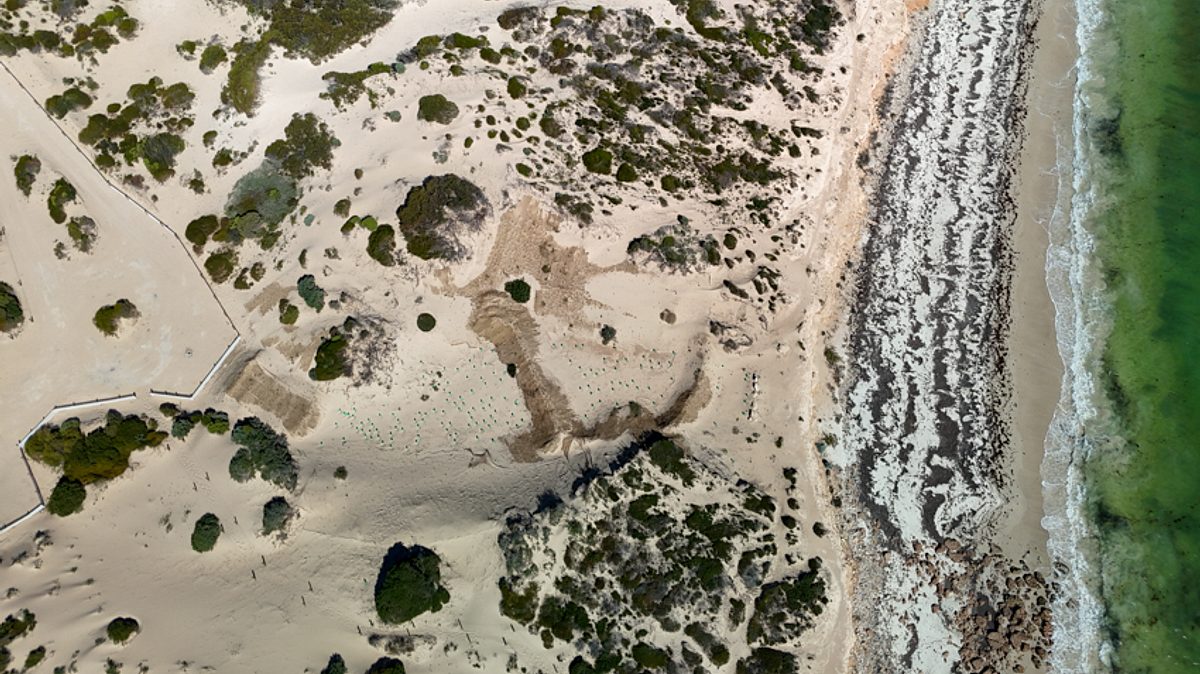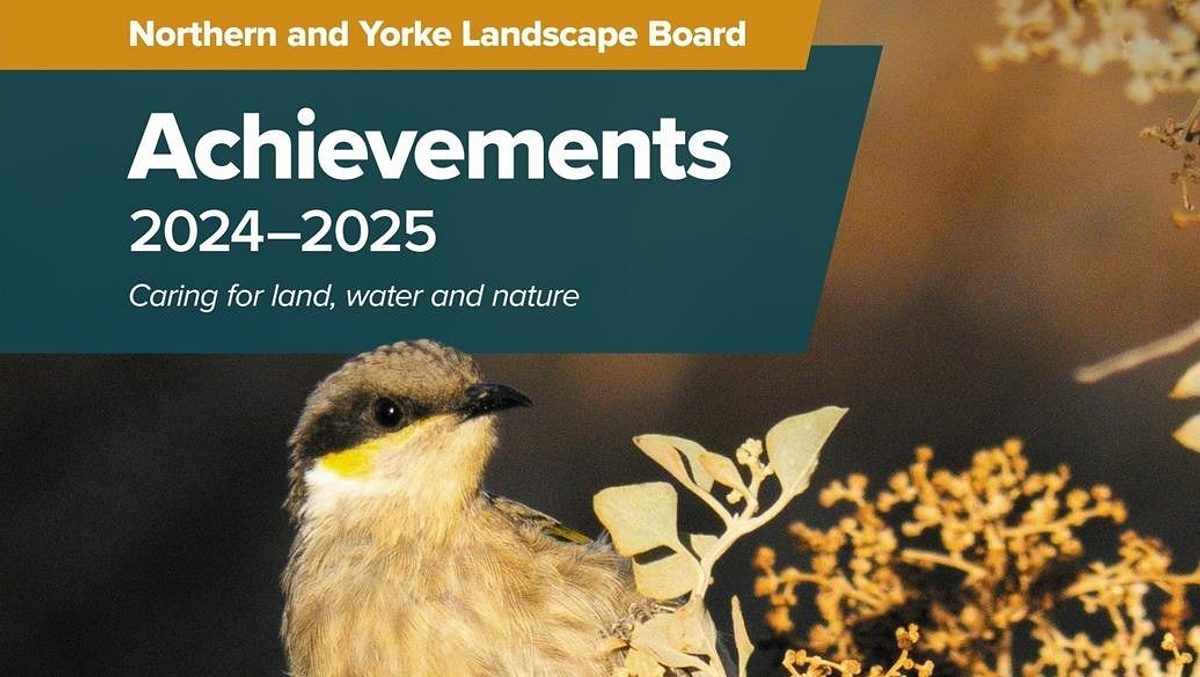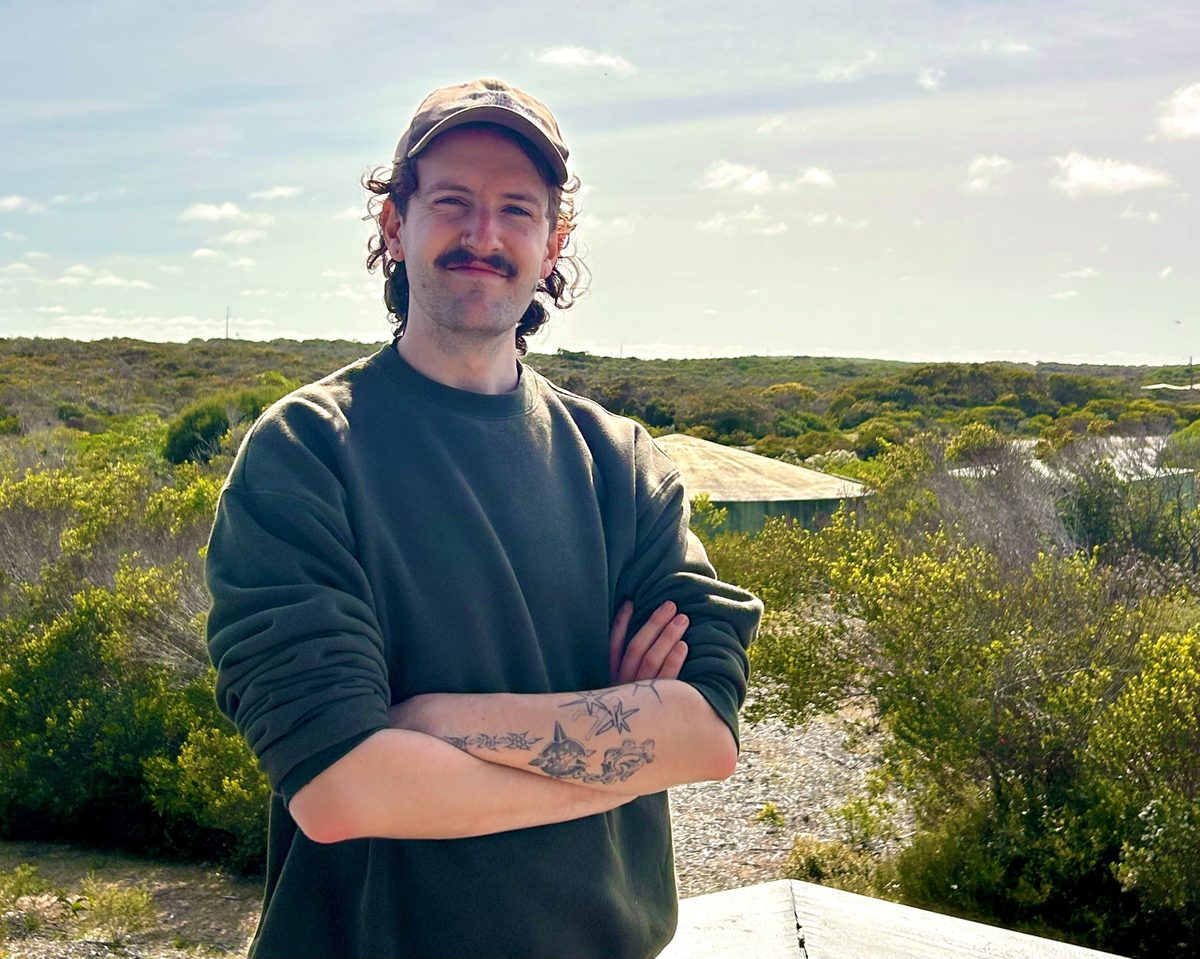From dune blow-out to rebuild at Balgowan
One of the largest dune restoration projects undertaken on Yorke Peninsula is showing positive signs, with sand dunes rebuilding, and native plants reestablishing despite dry conditions.
The dune restoration is a joint initiative of Northern and Yorke Landscape Board and Yorke Peninsula Council, as part of the Djulda-wawa Badja project.
The restoration project has focussed on a large area adjacent the Bamboos Bush Camp, near Balgowan.

Northern and Yorke Landscape Board Djulda-wawa Badja project manager Janet Moore said the works had included a rebuild of the dunes to kick-start the natural process of dune formation, and it was evident it was already working.
“The drift netting that has been installed is starting to capture sand, and some of the early coloniser plants are starting to pop up, despite dry conditions,” she said.
“The dunes are starting to build back up, so we’re really excited by what we can see so far.”

Council’s environment officer Letitia Dahl-helm said over time, The Bamboos had experienced significant erosion due to informal tracks linking the campground and the beach, which eventually grew large enough to be accessed by vehicles.
It had resulted in loss of the protective vegetation cover that keeps the sand in place.
“A large blow-out had occurred, totalling an area of over 2000 square metres, or equivalent to three large houseblocks,” Letitia said.
“The sand shifted by wind into the bush camp, burying fences, and camping and parking areas.
“Sand drift was so significant that it had travelled over 70 metres from its original location, and council previously had to unbury infrastructure.”

Working with the Northern and Yorke Landscape Board, a consultant was engaged to develop a Dune Restoration Management Plan, which council then implemented.
The plan included:
- creation of three dune formations within the blow-out using returned sand, covered with jute matting to retain sand in place
- installation of drift fencing, to prevent sand movement into the campground, and to keep the camp sites available for camping
- installation of boulders on the clifftop to act as wind velocity breaks
- installation of fencing to formalise the pedestrian pathway and clearly define 10 campsites within the campground
- installation of jute matting to blow-out edges, minimising further scouring
- revegetation with local provenance plants (11 kg of seed and seed clay balls, and 2000 tubestock).
The work reduces the ability of the wind to shift sand, and to scour and undermine dunes, allowing for the revegetation plants to take hold.

Encouragingly, natural regeneration is also occurring.
“Once the protective vegetation cover is established, there will be minimal sand movement,” Letitia said.
“Pedestrian access is also now clearly identified, and vehicles and pedestrians cannot access the rehabilitated area and surrounding sensitive dune system.”
Council staff and contractors, including Indigenous Protected Area Rangers have undertaken the work
The Bamboos is just one of the bush camping sites that has undergone rehabilitation thanks to the partnership.
Other bush camps that have had infrastructure improvements include The Gap, Gravel Bay, Parara, Burner’s Beach, and Len Barker.
The works at these locations have included fencing and boulders to direct visitors out of sensitive areas (including unsafe cliff areas), educational signage, and levelling of campsites for improved visitor experience.
“The partnership between the Landscape Board and council was vital to the success of these projects, particularly the dune restoration at the Bamboos Bush Camp because the dune blowout occurred across different land tenures,” said Janet.
“It covered council land, private land, as well as Crown land, so it really required everyone to agree and work together for a shared outcome.”
The works ensure that the environment is well-protected, and the campgrounds remain beautiful places to spend time into the future.
Djulda-wawa Badja means 'resilient coast' in Narungga language. For the past three-years the project has worked to build the coastline’s resilience through practical, on-ground land management activities across Yorke Peninsula. Project partners include councils, Narungga organisations, Landcare and bushfire recovery groups, non-government organisations, landholders, YP Tourism, AGL, Legatus Group, Regional Development Australia Yorke and Mid North and local schools. Funded by the Landscape Priorities Fund and Levy.


